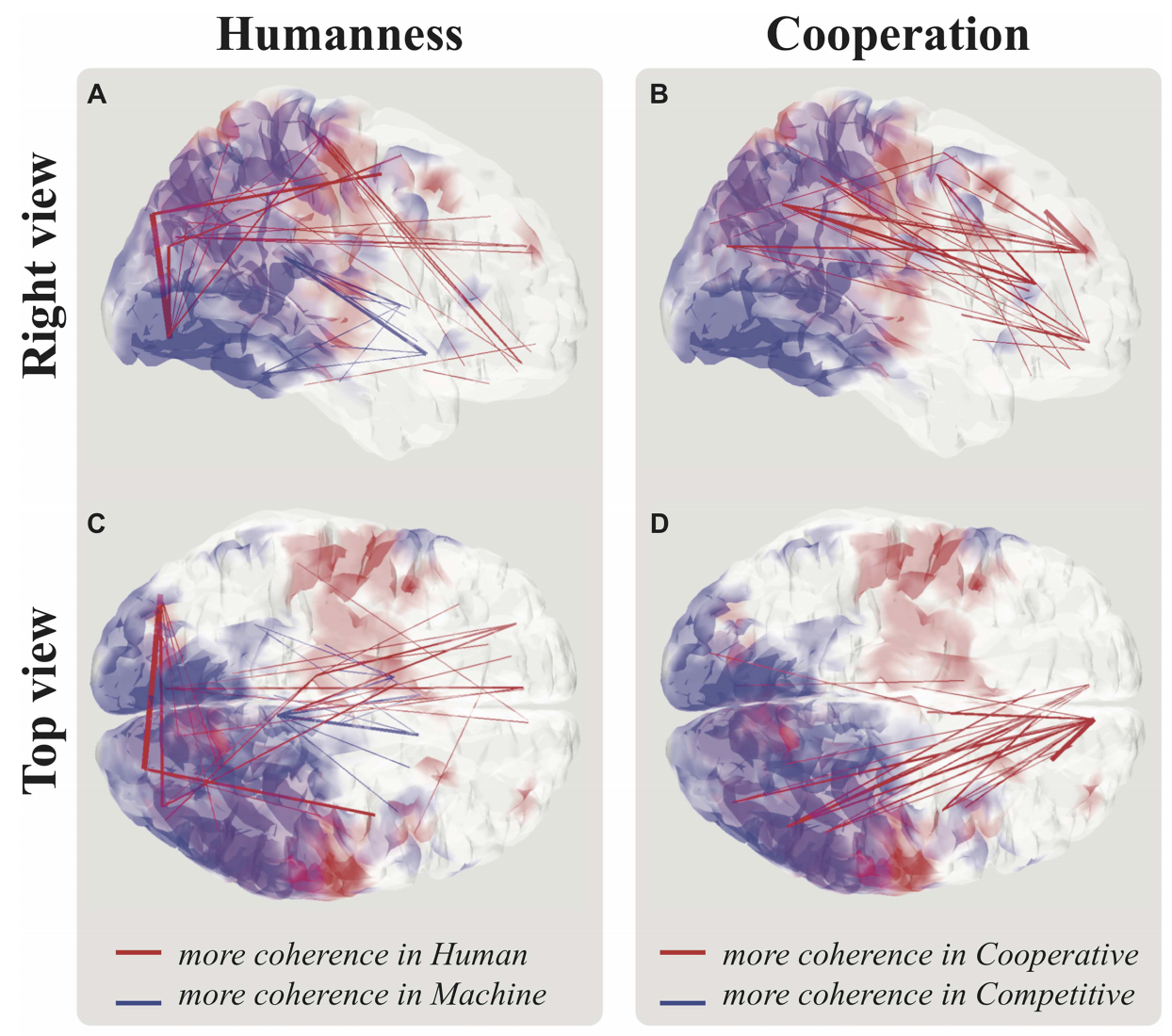The Human Dynamic Clamp Reveals the Fronto-Parietal Network Linking Real-Time Social Coordination and Cognition
Abstract
How does the brain allow us to interact with others? Social neuroscience has already provided some answers to these questions but has tended to treat high-level, cognitive interpretations of social behavior separately from the sensorimotor mechanisms upon which they rely. The goal here is to identify the underlying neural processes and mechanisms linking sensorimotor coordination and intention attribution. We combine the human dynamic clamp, a novel paradigm for studyingrealistic social behavior, with high-resolution electroencephalography. The collection of humanness and intention attribution reports, kinematics, and neural data affords an opportunity to relate brain activity to the ongoing social behavior. Behavioral results demonstrate that sensorimotor coordination influences the judgments of cooperativeness and humanness. Analysis of brain dynamics reveals two distinct networks related to the integration of visuo-motor information from self and other which overlap over the right parietal region. Furthermore, judgment of humanness and cooperation of others modulate the functional connectivity between this right parietal hub and the prefrontal cortex. These results reveal how distributed neural dynamics integrates information from “low-level” sensorimotor mechanisms and “high-level” social cognition to support the realistic social behaviors that play out in real time during interactive scenarios.


Leave a Reply